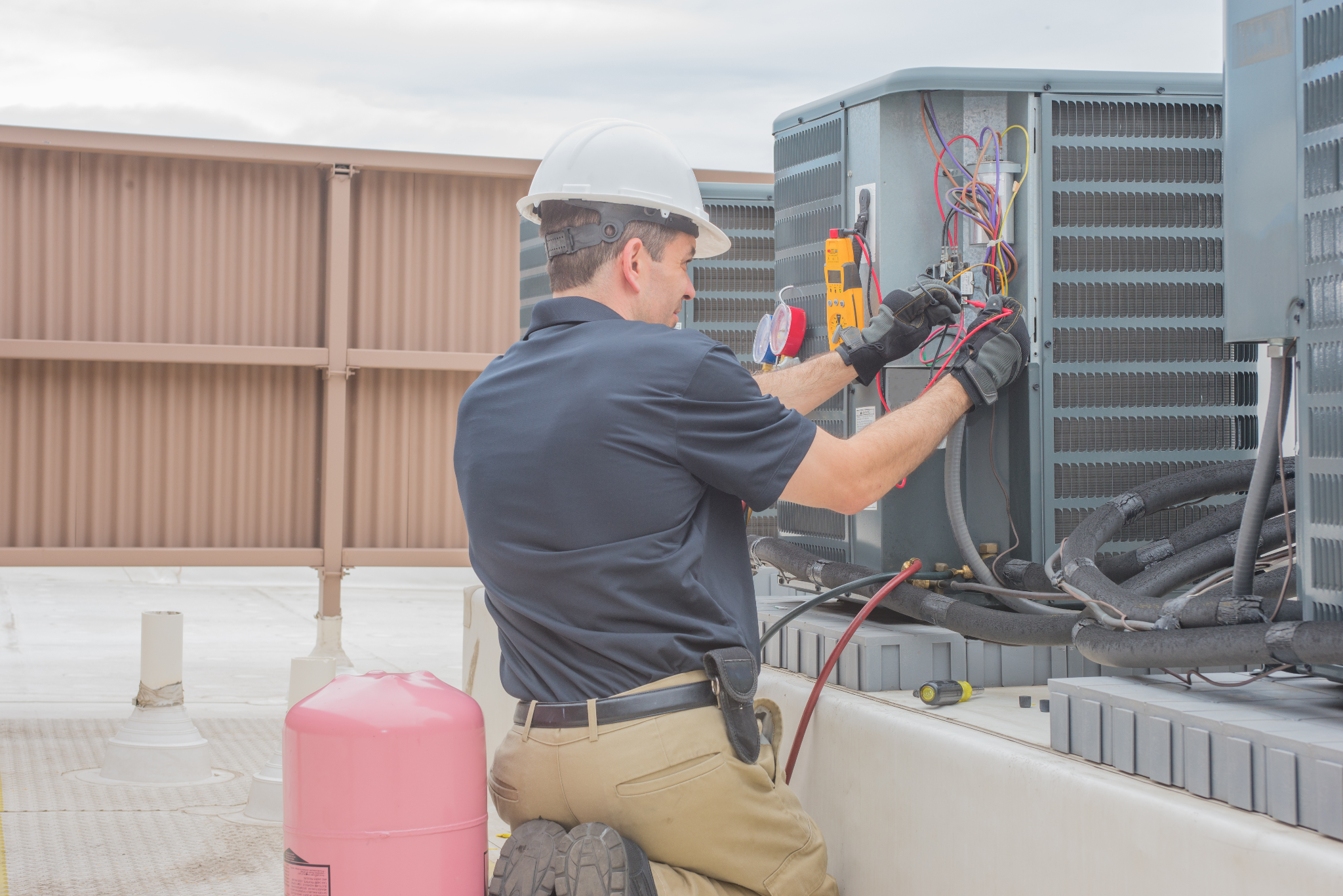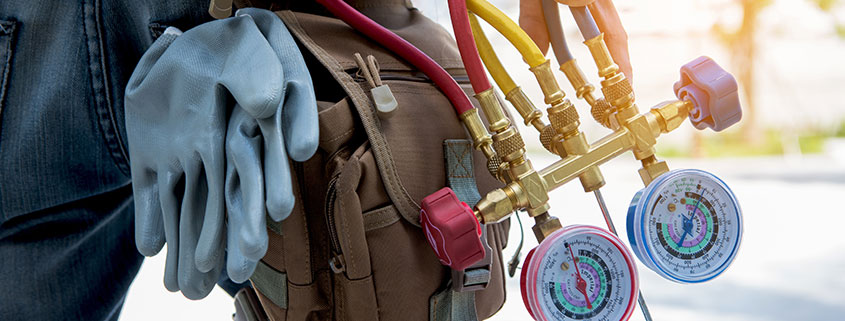Just How a Warm Pump and Heating System Interact to Optimize Your Home's Heating Performance
Understanding just how a heatpump and furnace collaborate is crucial for property owners looking for efficient heating remedies. Each system has its strengths, providing a balanced technique to home comfort. The heatpump masters moderate temperature levels, while the heating system provides fast heat during severe cold. This harmony not just lowers power expenses however likewise improves the lifespan of both home appliances. What aspects influence this partnership, and exactly how can property owners maximize their benefits?
Understanding Heat Pumps: Just How They Work
Numerous individuals might be unknown with their internal functions, heat pumps play an essential duty in modern home heating systems. These tools operate by moving warm from one location to an additional, utilizing the concepts of thermodynamics. In cooler months, a heatpump essences warmth from the outdoors air, ground, or water, and transfers it indoors to heat the home. On the other hand, during warmer months, it can turn around the procedure, serving as an air conditioner by getting rid of heat from inside to the outside.Heat pumps consist of an evaporator, compressor, condenser, and expansion shutoff. The cooling agent within the system takes in warmth as it evaporates at low temperatures and stress. The compressor then enhances the stress and temperature level of the cooling agent, enabling it to release warm as it condenses. This reliable process can greatly reduce power intake compared to conventional heating approaches, making heatpump a sustainable selection for climate control in homes.
The Duty of Heaters in Home Home Heating
Heaters play a vital function in home heating by providing a trusted resource of heat during the colder months. They operate by creating warmth with burning or electric resistance, distributing it throughout the home through air ducts or glowing systems. The efficiency of a heating system is frequently measured by its Annual Gas Utilization Performance (AFUE) rating, which indicates how properly the unit converts gas right into heat.Furnaces can make use of various power sources, consisting of natural gas, oil, electrical power, or gas, allowing homeowners to choose one of the most appropriate alternative for their needs. Unlike warm pumps, which may battle in severe chilly, heaters keep consistent performance, making sure that interior temperatures remain comfy no matter of exterior conditions. Furthermore, modern heating systems commonly come furnished with advanced technology, such as variable-speed blowers and wise thermostats, enhancing their effectiveness and responsiveness. This adaptability makes heating systems a critical part in comprehensive home heating approaches.

Benefits of Using Both Systems With Each Other
Combining the toughness of both heaters and warmth pumps can result in a much more reliable and efficient home heating solution. Making use of both systems allows home owners to make the most of the warmth pump's energy effectiveness during milder temperature levels while depending on the heater for more severe cold conditions. This double strategy can greatly reduce energy expenses, as warmth pumps consume much less power than standard home heating methods when temperature levels are moderate.Additionally, utilizing both systems with each other can boost comfort degrees in the home. Heatpump can offer constant, also heating, while furnaces can quickly elevate ambient temperature levels when needed. The integration of both systems can expand the lifespan of equipment by reducing wear and tear on each system, as they share the work. Ultimately, homeowners can enjoy a well balanced, cost-efficient home heating option that readjusts seamlessly to differing climate problems, making certain a warm and welcoming home throughout the winter season.
Exactly How Heat Pumps and Furnaces Complement Each Various Other
When homeowners incorporate warmth pumps and heating systems, they produce a corresponding heating system that maximizes performance and convenience. Heatpump run by moving warm from the outdoors air or ground, making them highly effective in modest climates. They succeed during milder temperature levels, providing affordable home heating. Conversely, furnaces produce warmth via burning or electrical resistance, delivering solid, immediate warmth during severe cold conditions.The mix of these 2 systems enables vibrant modifications based upon temperature fluctuations. During warmer months or milder winter days, the heatpump can take the lead, preserving energy and decreasing prices. As temperature levels drop, the heating system can seamlessly involve, ensuring constant warmth throughout the home. This synergy not only enhances power usage yet likewise enhances the life expectancy of both systems, as each device runs within its perfect performance variety. With each other, they produce a well balanced environment that adapts to differing environment demands.
Optimizing Efficiency: Tips for Homeowners
Home owners can enhance their heating effectiveness with numerous sensible strategies. Establishing a routine upkeep timetable, incorporating clever thermostat technology, and executing efficient insulation and securing solutions are essential steps. These steps not just improve comfort however also minimize power expenses.
Normal Maintenance Set Up
To assure optimal heating efficiency, developing a normal maintenance schedule is vital for any home. House owners must prioritize routine evaluations of both heatpump and heating systems to determine peak efficiency. This includes changing air filters each to three months, as clogged up filters can greatly lower effectiveness. Additionally, scheduling specialist maintenance at the very least annually enables service technicians to identify and resolve possible problems prior to they intensify. Homeowners should additionally clean the warm pump's outside device to avoid debris accumulation that can impede air movement. By adhering to a routine maintenance timetable, property owners not just boost their home heating systems' effectiveness use this link however likewise extend their life expectancy, leading to better convenience and decreased energy costs throughout the colder months.
Smart Thermostat Assimilation
Incorporating a smart thermostat into a home heating unit can considerably boost power performance, specifically as it permits for specific control over temperature level setups. These devices can discover the house owner's routine and preferences, automatically changing the temperature to optimize convenience while lessening power use. For example, they can reduce heating during times when the home is empty, lowering unnecessary usage. Numerous smart thermostats also offer real-time energy use data, allowing property owners to make enlightened choices concerning their home heating behaviors. Additionally, remote access through smart device applications allows customers to change settings from anywhere, making certain the home is warm upon return. On the whole, smart thermostat assimilation not only improves convenience but substantially adds to power cost savings and efficiency.
Insulation and Sealing Solutions
Smart thermostats play a critical function in power effectiveness, but their efficiency can be considerably enhanced by appropriate insulation and sealing remedies. Home owners ought to focus on protecting walls, floors, and attics to decrease heat loss. Top notch insulation products, such as spray foam or fiberglass, can considerably boost thermal resistance. Additionally, sealing spaces around doors, ducts, and windows avoids cold air infiltration and warm getaway. Weatherstripping and caulking are effective techniques for resolving these leaks - heat pump service. Normal inspections for air leaks, along with using blower door examinations, can aid recognize trouble areas. By spending in insulation and securing, home owners can maximize the efficiency of their heating unit, inevitably leading to reduced energy usage and lower utility bills
Common Myths Concerning Warmth Pumps and Furnaces
What mistaken beliefs border heatpump and heating systems? Numerous individuals wrongly believe that heatpump are inadequate in colder environments. In truth, contemporary heatpump are developed to run effectively even in reduced temperatures, providing dependable home heating throughout winter. One more common misconception is that heating systems are constantly more reliable than warm pumps. This depends on the specific energy sources and effectiveness ratings of the systems in inquiry. Some might also assume that using both systems all at once is unneeded, but as a matter of fact, this combination can optimize home heating effectiveness, specifically throughout severe weather problems. In addition, individuals usually presume that warmth pumps require constant upkeep, when in truth, they have similar upkeep requires to conventional furnace. By debunking these myths, home find out owners can make more educated choices concerning their home heating options, eventually bring about enhanced convenience and power performance in their homes.
Upkeep Considerations for Combined Systems

Often Asked Concerns
Can Heat Pumps Job Effectively in Incredibly Cold Climates?
Heatpump can struggle in exceptionally chilly environments because of reduced performance and heat extraction limitations. Advancements in modern technology have led to versions created for better efficiency in such conditions, improving their viability in rough atmospheres.
How Lengthy Do Warm Pumps and Furnaces Generally Last?
Heatpump generally last 15 to twenty years, while heaters have a life-span of 15 to 30 years. Routine upkeep can extend their long life, making sure reliable operation and minimizing the demand for premature substitutes.

What Is the Average Price of Installing Both Equipments?
The typical price of setting up both a heatpump and a heating system typically varies in between $5,000 to $10,000 - furnace replacement. Aspects affecting this cost consist of system dimension, installation image source intricacy, and local labor rates
Exist Tax Obligation Rewards for Making Use Of Energy-Efficient Heating Solutions?
Lots of house owners make inquiries about tax motivations for energy-efficient home heating systems. Various government and state programs usually provide credits or refunds, motivating the fostering of sustainable modern technologies to lower energy intake and advertise environmental obligation.
Just how Do I Pick the Right Dimension Warm Pump and Heating System?
Picking the appropriate dimension heatpump and heating system includes determining the home's square video, taking into consideration insulation quality, and assessing regional climate. Consulting a specialist can guarantee perfect system performance and energy effectiveness based upon specific requirements. furnace replacement. Recognizing how a warmth pump and heater job together is vital for house owners seeking efficient heating solutions. In cooler months, a warmth pump essences warmth from the outdoors air, ground, or water, and transfers it inside your home to warm the living room. When homeowners integrate warmth pumps and heating systems, they create a corresponding heating system that maximizes performance and comfort. Heat pumps operate by moving warm from the outside air or ground, making them very effective in moderate climates. Warm pumps can struggle in exceptionally cool climates due to lowered effectiveness and warmth removal restrictions